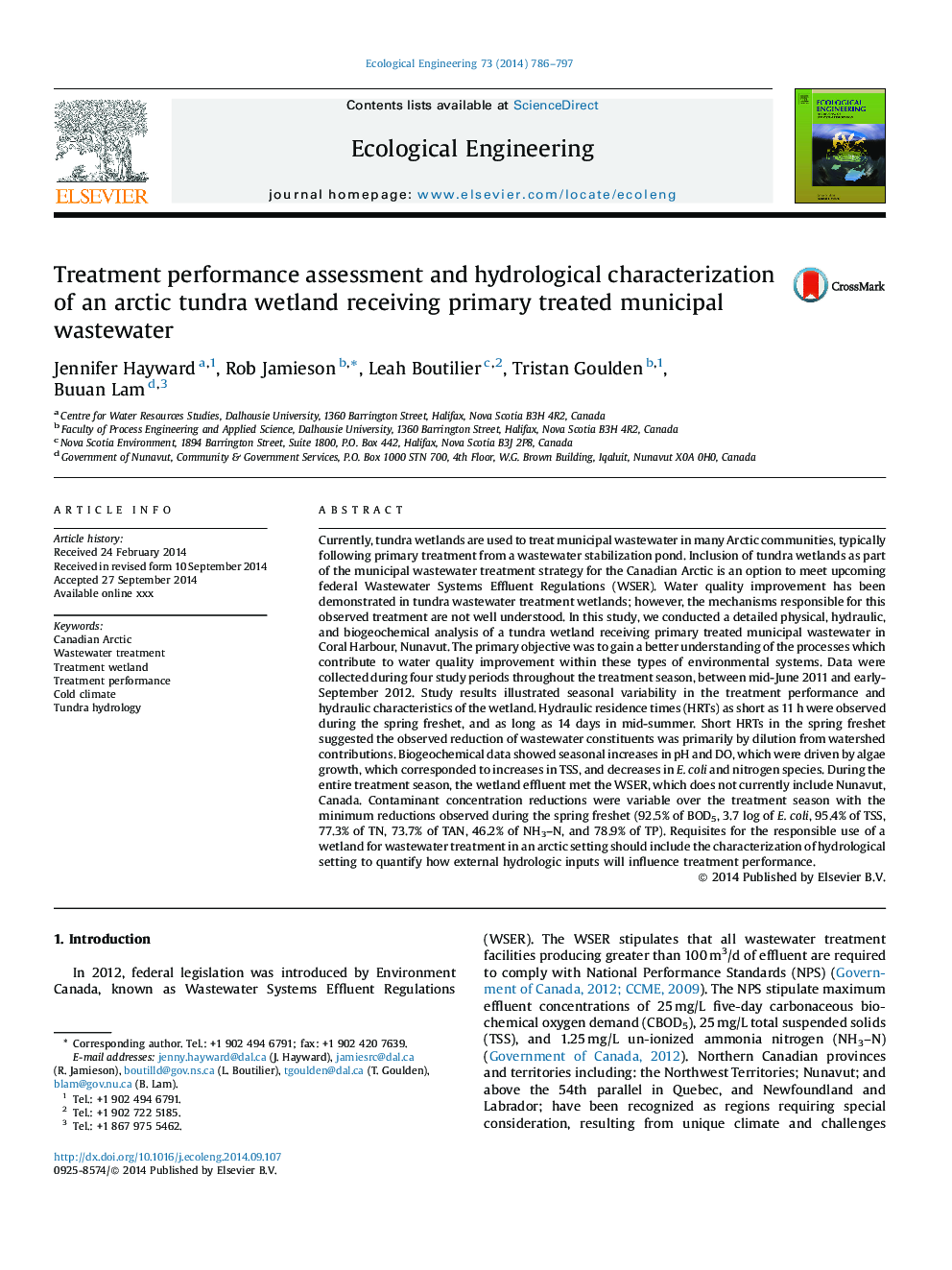| کد مقاله | کد نشریه | سال انتشار | مقاله انگلیسی | نسخه تمام متن |
|---|---|---|---|---|
| 6302088 | 1618026 | 2014 | 12 صفحه PDF | دانلود رایگان |
عنوان انگلیسی مقاله ISI
Treatment performance assessment and hydrological characterization of an arctic tundra wetland receiving primary treated municipal wastewater
ترجمه فارسی عنوان
ارزیابی عملکرد درمان و ویژگی های هیدرولوژیکی تالاب آرچتی تاندرا که دریافت پسماندهای شهری اولیه را دریافت می کنند
دانلود مقاله + سفارش ترجمه
دانلود مقاله ISI انگلیسی
رایگان برای ایرانیان
کلمات کلیدی
قطب شمال کانادا، تصفیه فاضلاب، درمان تالاب، عملکرد درمان، آب و هوای سرد هیدرولوژی توندرا،
موضوعات مرتبط
علوم زیستی و بیوفناوری
علوم کشاورزی و بیولوژیک
بوم شناسی، تکامل، رفتار و سامانه شناسی
چکیده انگلیسی
Currently, tundra wetlands are used to treat municipal wastewater in many Arctic communities, typically following primary treatment from a wastewater stabilization pond. Inclusion of tundra wetlands as part of the municipal wastewater treatment strategy for the Canadian Arctic is an option to meet upcoming federal Wastewater Systems Effluent Regulations (WSER). Water quality improvement has been demonstrated in tundra wastewater treatment wetlands; however, the mechanisms responsible for this observed treatment are not well understood. In this study, we conducted a detailed physical, hydraulic, and biogeochemical analysis of a tundra wetland receiving primary treated municipal wastewater in Coral Harbour, Nunavut. The primary objective was to gain a better understanding of the processes which contribute to water quality improvement within these types of environmental systems. Data were collected during four study periods throughout the treatment season, between mid-June 2011 and early-September 2012. Study results illustrated seasonal variability in the treatment performance and hydraulic characteristics of the wetland. Hydraulic residence times (HRTs) as short as 11Â h were observed during the spring freshet, and as long as 14 days in mid-summer. Short HRTs in the spring freshet suggested the observed reduction of wastewater constituents was primarily by dilution from watershed contributions. Biogeochemical data showed seasonal increases in pH and DO, which were driven by algae growth, which corresponded to increases in TSS, and decreases in E. coli and nitrogen species. During the entire treatment season, the wetland effluent met the WSER, which does not currently include Nunavut, Canada. Contaminant concentration reductions were variable over the treatment season with the minimum reductions observed during the spring freshet (92.5% of BOD5, 3.7 log of E. coli, 95.4% of TSS, 77.3% of TN, 73.7% of TAN, 46.2% of NH3-N, and 78.9% of TP). Requisites for the responsible use of a wetland for wastewater treatment in an arctic setting should include the characterization of hydrological setting to quantify how external hydrologic inputs will influence treatment performance.
ناشر
Database: Elsevier - ScienceDirect (ساینس دایرکت)
Journal: Ecological Engineering - Volume 73, December 2014, Pages 786-797
Journal: Ecological Engineering - Volume 73, December 2014, Pages 786-797
نویسندگان
Jennifer Hayward, Rob Jamieson, Leah Boutilier, Tristan Goulden, Buuan Lam,
